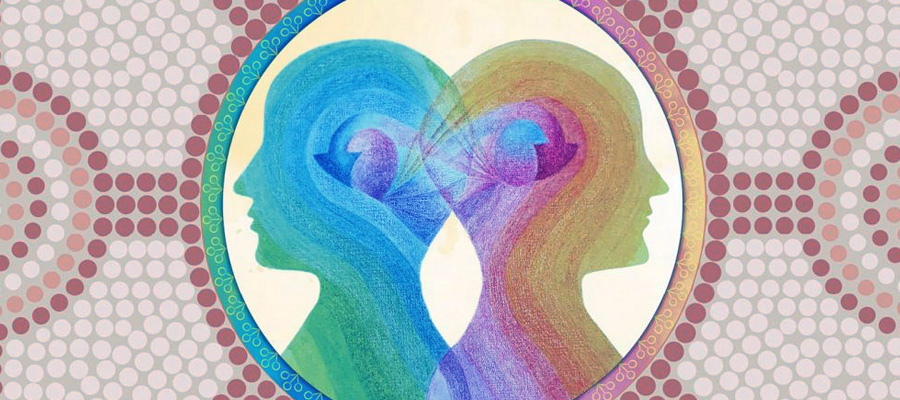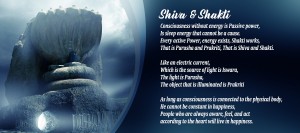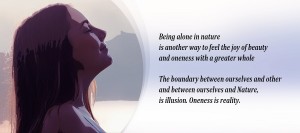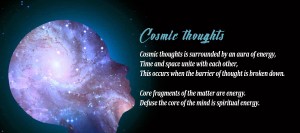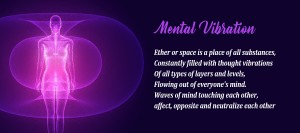- 1Consciousness and the Seven Dimensions
- 2The First Dimension of Consciousness - The Inside of the Object
- 3The Second Dimension of Consciousness - Five Sense
- 4Third Dimension of Consciousness - Thoughts and Feelings
- 4..1Third Dimension in Depth
- 5Fourth Dimension of Consciousness - Mountaintop Consciousness
- 5..1Steadiness in the 4th Dimension
- 6Fifth Dimension of Consciousness - The Mind of Light
- 6..1Blissfulness in the 5th Dimension
- 7Sixth Dimension of Consciousness - The World of Sounds & Colors
- 7..1Awareness Aware of Itself
- 8Seventh Dimension of Consciousness - Pure Inner Space
Dimensions are a positive and helpful way of looking at life and understanding the experiences we have on the inner path. By identifying experience as being in one dimension or another, we can know each moment that we are in consciousness, and that knowledge is the control over consciousness we need to continue our ascent upward to the more subtle. Our every moment flows through all dimensions. They are all in total completion right now within us. However, we are only periodically aware of any of them as consciousness magnifies itself and takes note of the dimension by focusing on it, shall we say.
The mind divides consciousness into seven categories which range from the gross to the very subtle. The first two describe physical existence—the inside and outside of things. The third dimension is the normal level of consciousness of human beings, consisting of thoughts and emotions about our own lives and the lives of others. The fourth to seventh dimensions can be described as the inner, mystical or higher planes of consciousness.
They exist within everyone but require training and practice to be continuously accessible. This unique framework is useful for providing guidance in our efforts to access inner states of consciousness. This requires knowledge of which dimension of mind the state of mind is in.
Like following a sailor’s chart, once we pinpoint a superconscious experience, we can return to it again and again, just as sailors can reach the shore on a map.
Consciousness and the Seven Dimensions
Consciousness itself functions differently from one dimension to another. When we look at life from the fourth dimension, we see much deeper than what we can see from the third or second dimension. Remember when we studied the second dimension, we found no depth at all? Then we make a third. We put depth and life, passion and vitality into the second dimension of things that are just there. Then we are entangled in this power and vitality, in the relationship between people and people and people and things, and the subconscious is created. The ego-feeling, the personality, develops from the third dimension, because it consists of a strange magnetic force. Intelligence and emotions dominate us.
When we let go of awareness to travel freely within the mind by positively managing the second and third dimensions, we enter another perspective. We get the overview, the mountaintop awareness from which we can see the scope of nine days of time and see in and through all the intricacies of the third dimension and how it was created. In a sense, we are letting more light into the third dimension, the dark areas of the mind. Here, the term awareness refers to:
Individual consciousness; perception; knowing; the witness of perception, “the inner eye of the soul.”
When we are in darkness and confusion, that is the third dimension totally. But when we bring more light into the third dimension and see how it is constructed, we are in the fourth dimension and can also look into the deeper dimensions. From the fifth dimension, we become aware of the intricacies and inner workings of the fourth dimension, see what the psychic nerves are like, see how the psychic nerves draw their energy from a central source of energy. In the fifth dimension, we are aware of a bright light filling the skull. In an instant we comprehend vast lore and see the creation, preservation and destruction of objects over seemingly vast spans of time simultaneously in the present. Deep love, universal and all-embracing love, open.
Consciousness also changes. Instead of traveling or flowing through thoughts, he can now focus and look at any area without seeming to move. Experience comes before our inner vision, and we can even bring past and future into the present. Then we expand into the sixth dimension, where all form is reduced to sound and color. Divine or heavenly powers represented by Gods, Deities become manifest. From the sixth dimension, which corresponds to the ajna chakra or the third eye, the inner world opens and light floods the whole body.
The seventh dimension, or sahasrara chakra, takes us into pure consciousness or pure formless space — consciousness that is only aware of itself. Here consciousness finally withdraws even from the extraordinary vision of superconsciousness, and without any object is able to contemplate itself as kaif. Finally, the snake swallows its own tail, consciousness disappears and only What remains, the Divine Self beyond all dimensions of thought.
Of course, it’s one thing to hear about dimensions, to be intellectually captivated by the breadth of these perspectives, and quite another to make them part of our life experience. That’s what to do next. Identify the dimensions in the context of your own personal experience.
Ask yourself, “In which dimension did something like this happen? How does one dimension relate to and exist within another dimension within me?”
Mark different areas of the mind. Map it out carefully and you will identify and enjoy aspects of yourself that you never knew existed.
You will observe that man is the whole, the totality of all existence residing within him in various layers of subtle and gross vibrations, developing ever more subtlely as the continuum penetrates deeper into his being, eventually reaching his own timeless and spaceless Reality. have. then identify as one Reality in all existence.
Briefly as follows:
- First Dimension: The inside of physical objects that you cannot see or touch.
- Second Dimension: All physical objects that you can see and touch.
- Third Dimension: The interrelated magnetic forces that exist between people and people and their things.
- Fourth Dimension: Consciousness knows the interrelated forces of the fifth, fourth and third dimensions. The natural state for those who meditate.
- Fifth Dimension: Awareness of forms in their totality in a progressive state of manifestation.
- Sixth Dimension: The area of the mind that is clarified where form is understood from inner sounds and colours.
- Seventh Dimension: Consciousness extends into the endless inner space.
The First Dimension of Consciousness
– The Inside of the Object
The first dimension is the inside of things that you cannot see or touch. The inside of a piece of fruit is the first dimension; the outside or surface of the fruit is the second dimension. The inside of the physical body, the Earth, a tree and a stone—these all lie in the first dimension. To bring the first dimension out, simply open up the fruit. The part that was previously unseen as well as untouched but which is now visible and tangible has been brought into the second dimension.
It is interesting to note that most of modern science is dedicated to unfolding knowledge of the first dimension, and that within the molecular, atomic and sub-atomic elements of matter the other seven dimensions are discovered. Thus the scientist, by looking into matter, finds the deeper dimensions to the point of reducing matter to energy and energy to sound and light. Further reducing sound and light to consciousness and anti-matter, he verges on the brink of contemplative realization similar to that discovered in deep meditation. Therefore, all dimensions of the mind exist in every cell, every atom in the universe.
Within the first dimension of the mind, called shumsumna, there are energy flows. Energy in its static state. Energy spinning. Energy lifting, pushing, pulling, rising, falling, attracting, repelling, changing form, filling, emptying, appearing and disappearing. Eighteen forms of energy exist in the first dimension, interacting and causing the phenomena observed in the physical world and studied by science as gravity, momentum, inertia, magnetism, electricity and various forces. We can see these energy flows very readily in nature as we witness, without holding previous concepts, the actions and interactions within plants, within stones, within water, wind and fire.
The Second Dimension of Consciousness
– Five Sense
The second dimension consists of things which can be both seen and touched—the surfaces of objects such as flowers, stones and water. When we observe these objects without thinking about them, without feeling like or dislike—just pure perception—then we are aware of the second dimension.
It appears flat, consisting of only two layers of form, for it is seen without evaluation or analysis which gives depth to our observations. If we close our eyes and then open them very slowly, holding the mind steady, we can sit without relating to anything we see and therefore see it objectively as it is. This flat view of the world of objects can be experienced more easily by opening just one eye than with both eyes open. There is a tendency to get involved with what we see when both eyes are open. What we perceive are things that can be identified with the five senses—things we can smell, hear, touch, taste and see. These perceptions are all two-dimensional through the senses. Through interpretation they do flow into deeper dimensions of the mind.
The mystic, in looking out at the world of objects, sees the second dimension as a coherent conglomeration of “things.” Recognizing the limited mind function of things, or the boundary of second-dimensional intelligence, he does not become entangled in his relationship to them. Nevertheless, he does relate to the second dimension by using it, by observing it, by appreciating it, or by renouncing it. He places the two-dimensional world where it belongs.
Forms are always changing in the second dimension. However, the substance out of which they are made is recycled from one form to another form. According to the mystic’s perspective, all forms exist in all time cycles within the mind. There is nothing created; there is nothing preserved; there is nothing destroyed. All things exist simultaneously, coming into various dimensions of manifestation from time to time.
The decay, the change of form in the second dimension through time cycles, is apparent when things of short time cycles are viewed—a flower, for instance. The brief time span of a flower lets us view its budding, blossom, life and decay within a matter of days or even hours. The atoms of a flower will go to some other forms once that flower has demagnetized itself by breaking through a time cycle. A banyan tree or mountain are examples of objects with apparently more permanence, or which take years or centuries for the process of decay to become visible.
The second dimension has been and always will be created through certain aspects of time cycles and is comprised of two parts: time continuity or memory and the instinctive consciousness that works involuntarily according to habit patterns in man as well as in animals. Nature, then, is related to the instinctive mind. The memory patterns of a flower are very strong. It comes up the same year after year, century after century. It does not forget how to form itself. So, the second dimension is created by the instinctive forces of nature, the instinctive mind of animals and man in conjunction with the memory patterns of the grand mind of nature—created by man according to his needs and desires.
Man himself controls these time cycles to a certain extent, but not totally. For one thing, he holds the second dimension together in consciousness in short, medium or long time cycles, depending upon the nature of the object’s construction. If he actually constructs it himself, then the amount of energy and thought put into planning and clear thinking will either lengthen or shorten the time cycle. Because his body is of the second dimension, as he enters into a particular time cycle he adds power to that cycle and objects in it and can act either as creator, preserver or destroyer and thereby lengthen or shorten a natural time cycle. A man could allow a chair to sit until it went into its natural decay, or he could enter the picture as another second-dimensional object and preserve or destroy it.
The second dimension is the exterior world which most languages describe abundantly, making it seem real to us and giving it a sense of permanency, for man’s mind gives substance or recognition to things that are named or labeled. Most people acquire a possession, and instead of using that possession and disposing of it, they use it and become attached to it through like and dislike. It becomes a part of their mind. It becomes real to them. They take it seriously, and when the time comes to dispose of that possession, they are unhappy. This indicates the narrowing down of the mind which has been caused by language and attitudes which build possession and the significance of physical things out of proportion.

